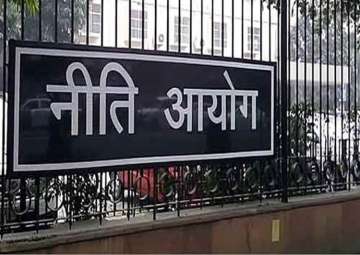NITI Aayog charts doubling farmers’ income strategy
Government think-tank NITI Aayog has drawn up an exhaustive plan for achieving the target of doubling farmers' income in five years ending 2022-23.

Government think-tank NITI Aayog has drawn up an exhaustive plan for achieving the target of doubling farmers' income in five years ending 2022-23.
The main stress of the plan is on increasing the area under irrigation, diversification of crops to help farmers sow more than one crop in rain fed areas and linking the farmers to a common market through E-Nam for ensuring remunerative returns.
Taking 2015-16 as the base year of farmers' income, the strategy would also focus on developmental, technological and policy initiatives to double farmers' income and provide irrigation to the rain fed area, which would be a major component.
At present, the total area in the country under irrigation is 45 per cent and the production in irrigated area is double as compared to the rain fed area and endeavour would be to increase the irrigated area by seven per cent, which would imply that the production would be enhanced by 14 per cent, said Romesh Chand, member of NITI Aayog.
Moreover, in 55 per cent cultivable land, only one crop is sown while 45 per cent area is without crops for eight months in a year. Diversification of crops would not only improve land productivity but also double the farmers' income, he asserted.
To ensure remunerative returns for their crop and end the monopoly of local agents, a single market concept has been evolved by connecting all the markets through E-Nam, he said.
The E-Nam project is under implementation in Karnataka and has been a great success. The new initiative has helped farmers in increasing their income by 13 per cent in two years and now, it was implemented across the country, Chand said.
Further, the contribution of agriculture to GDP was only 17 per cent while 45 per cent population was engaged in agriculture. The contribution has to be increased to 45 per cent for which skill development programmes have been started to provide skill training and employment to people near their homes.
He said that to protect the farmers from crop loss due to vagaries of weather, various crop insurance schemes have been launched.
"However, the Pradhan Mantri Fasal Bima Yojna has not been implemented well in Himachal as the structuring of the scheme did not coincide with the apple crop but now we are aware of it. The issue would be resolved," he added.
Chand also said that the performance of Himachal in road connectivity and Health sector is laudable and it was among top 10 states in health and among top five in roads but the tribal district of Lahaul and Spiti was among the 100 worst districts with poor road connectivity.
He said Himachal has a good educational infrastructure and had done well in enrolment but infrastructure and enrolment alone is not sufficient. The concerns of quality education have to be addressed.
Chand also said that since Himachal Pradesh is sparsely populated, there are several villages with less than 250 people which are not covered under Pradhan Mantri Gramin Sadak Yojana (PMGSY) and necessary changes would be made in the policy and guidelines to solve this problem.